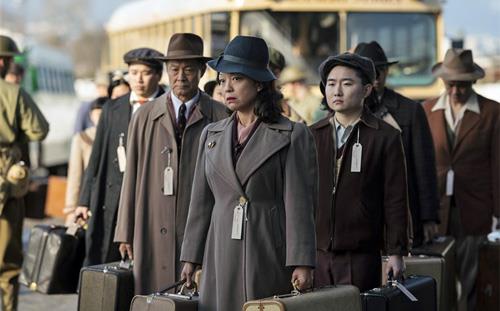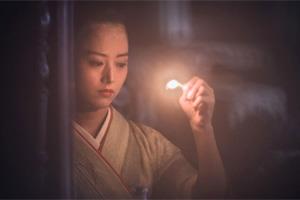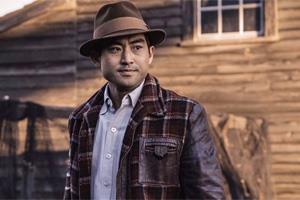
Season 2 of AMC’s The Terror anthology series delivers the requisite supernatural horror.
But the real horror in The Terror: Infamy, which launches Monday at 9 p.m. ET, lies outside the purview of demons. It lies in what people do to each other.
The second season is primarily set in one of the internment camps in which Japanese Americans were herded during World War II. The show’s title, Infamy, alludes to the speech that U.S. President Franklin D. Roosevelt delivered after Japan attacked Pearl Harbor and propelled America into World War II.
 “A date which will live in infamy,” Roosevelt called it.
“A date which will live in infamy,” Roosevelt called it.
Hastily erected in response to American fears that some residents of Japanese descent might be more loyal to their ancestral homeland than to their current country, the camps were cold, crowded, dirty, and dehumanizing. They were prisons for the innocent, and their legacy was sufficiently appalling that 40 years after the war, Congress voted reparations to internees as a gesture of acknowledgment and apology.
As gestures go, it was modest. Most internees, even if they survived the Spartan conditions, lost everything. If they had businesses or homes, they were gone. If they had bank accounts, the money disappeared.
Few U.S. TV producers or moviemakers have tackled internment camps, perhaps correctly sensing the subject isn’t something most Americans today want to think about.
So it’s a smart move that the Terror team doesn’t frame Infamy as just a story about the camps. While it’s set in a camp and follows characters whose lives were permanently altered by the camps, it’s framed inside that supernatural horror element, which spans time, generations and international borders.
All of which sounds pretty vague.
On a more concrete level, the story begins in late 1941, just before Pearl Harbor, with the Nakayama family, who emigrated from Japan some three decades earlier.
 Fishermen by trade, they settled on tiny Terminal Island in San Pedro, California. The patriarch Henry (Shingo Usami) is still a working fisherman.
Fishermen by trade, they settled on tiny Terminal Island in San Pedro, California. The patriarch Henry (Shingo Usami) is still a working fisherman.
He has a classic immigrant story. He worked hard, kept his head down, and said, “yes sir no sir” a lot. His American dream was to save enough money to buy his own car, and after 20 years he did: a big black Packard with the spare tire encased on the front of the passenger side running board.
His son Chester (Derek Mio), born in the U.S.A., has a classic second-generation story. He loves his parents, but his dream is to get off Terminal Island and absorb America. He went to college in Los Angeles, and now he aims to become a magazine photographer.
His father cautions him against trying to assimilate too far and too fast, so he shares more of his dreams with his more simpatico sister Asako (Naoko Mori).
At school, Chester meets Luz Ojeda (Cristina Rodlo), who’s not from his culture, and that in turn leads him to a mysterious woman named Yuko (Kiki Sukezane), who will play a prominent role in his life. And perhaps in the supernatural part of The Terror.
 As every viewer will quickly surmise, the plot kicks into gear with the attack on Pearl Harbor, which turns growing suspicion of Japanese Americans into anger and rejection.
As every viewer will quickly surmise, the plot kicks into gear with the attack on Pearl Harbor, which turns growing suspicion of Japanese Americans into anger and rejection.
That obviously has a direct if differing impact on the Nakayama family. Henry Nakayama is among those quickly rounded up by the military, with the initial explanation that it’s merely a temporary protective measure.
When protection turns out to be an internment camp, Henry discovers the further bad news that the supernatural force, which he once hoped to leave back in Japan, has not only followed him to America but now to the camp. Just what everyone there needs.
But just as with, say, The Walking Dead, the supernatural forces aren’t the biggest danger here. The demons in The Terror: Infamy are going to have to take a number.